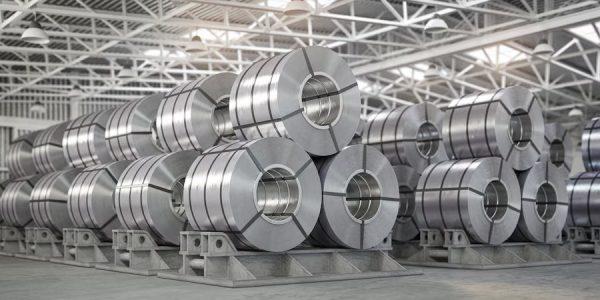Steel remains one of the most dependable materials in construction and manufacturing. From high-rise buildings to compact appliances, it offers unmatched strength, flexibility, and durability. Among its many forms, the steel sheet plays a central role. Lightweight yet strong, this material is used in various industries where precision and resilience matter most.
What Is a Steel Sheet?
A steel sheet is a flat, thin piece of steel made by rolling the metal into a uniform thickness. Builders, engineers, and designers value it for its adaptability. Whether it's part of a roof, machine panel, or structure, this material holds its shape well and resists wear over time.
Key features of steel sheets:
-
Uniform Thickness
Each sheet comes with precise thickness, which ensures consistency across projects. -
Strong and Flexible
Steel sheets bend without breaking, which helps in custom fabrication. -
Easy to Cut and Weld
The flat shape allows for quick modifications using standard tools.
With proper handling, a steel sheet can support both everyday use and heavy-duty tasks.
Mild Steel: The Backbone of Simple Strength
While steel sheets come in various grades, mild steel stands out for its balance of strength and workability. It contains low carbon, which makes it easier to shape or weld. Mild steel forms the base for many steel sheets used in homes and factories.
Reasons mild steel is a preferred choice:
-
Easy to Work With
It can be drilled, cut, or bent without cracking or splintering. -
Good for Indoor Use
Mild steel resists light corrosion and works well in dry settings. -
Lower Cost and High Utility
It serves well for basic structures without breaking budgets.
Builders often select mild steel when they need dependable performance for common tasks like brackets, frames, or fencing panels.
How Steel Beams and Steel Plates Work with Steel Sheets
Steel elements often work together. In many projects, flat pieces like steel sheets are joined with larger supports such as steel beam or reinforced by thicker steel plates. Each plays a unique role in the structure.
Steel Beams
These horizontal supports form the skeleton of large buildings or bridges.
-
Carry Heavy Loads
Steel beams support roofs, walls, and floors with even weight distribution. -
Come in Many Shapes
I-beams and H-beams are popular for their strength and balance. -
Work with Sheet Covers
Often, builders use beams to hold steel sheets in place on walls or ceilings.
A well-placed steel beam improves structural integrity and keeps buildings stable for decades.
Steel Plates
Thicker and stronger than steel sheets, these plates handle extra pressure.
-
Used in High-Load Areas
Steel plates line truck beds, factory floors, and bridge decks. -
Join with Sheets for Extra Strength
When fixed beneath or behind a steel sheet, plates increase impact resistance. -
Allow for Welding and Bolting
They form the core in heavy machinery, tanks, and marine structures.
Whether used alone or in combination, a steel plate supports intense force without losing shape.
Where Steel Sheets Fit in Today’s World
From daily tools to national infrastructure, steel sheet materials appear in countless places. Their clean finish and strong body suit both practical and decorative use.
Common uses of steel sheets:
-
Construction
Steel sheets cover walls, roofs, and floors in both homes and industrial zones. -
Automotive
Car panels, bonnets, and doors often use steel sheets for strength and weight balance. -
Furniture and Fixtures
Cabinets, countertops, and worktables use steel sheets for a modern and clean look. -
Appliance Covers
Washing machines, ovens, and refrigerators rely on steel sheet casings for protection.
The flexibility of the steel sheet makes it suitable for both small-scale tasks and large-scale builds.
Choosing the Right Steel Form for Your Project
Each project has its own needs. Picking the correct steel material—whether a sheet, beam, or plate—can affect performance, safety, and lifespan.
Key points to consider:
-
Weight vs Strength
Use thinner steel sheets for light covers, but switch to beams or plates for load-bearing needs. -
Indoor vs Outdoor Use
Choose coated or treated steel for outdoor jobs to resist rust. -
Ease of Cutting and Joining
Steel sheets and mild steel offer simple processing for DIY or professional work.
By matching the right steel type to your purpose, you build better and safer environments.
Final Thoughts
Steel in all its forms holds cities together, powers factories, and shapes products we use every day. Among these, the steel sheet remains one of the most useful and versatile tools available to builders and designers. When combined with strong mild steel, reinforced steel beams, or heavy-duty steel plates, the results speak for themselves—safe, smart, and built to last.
In today’s ever-evolving construction world, steel continues to stand firm. And it often begins with something as simple and strong as a steel sheet.



